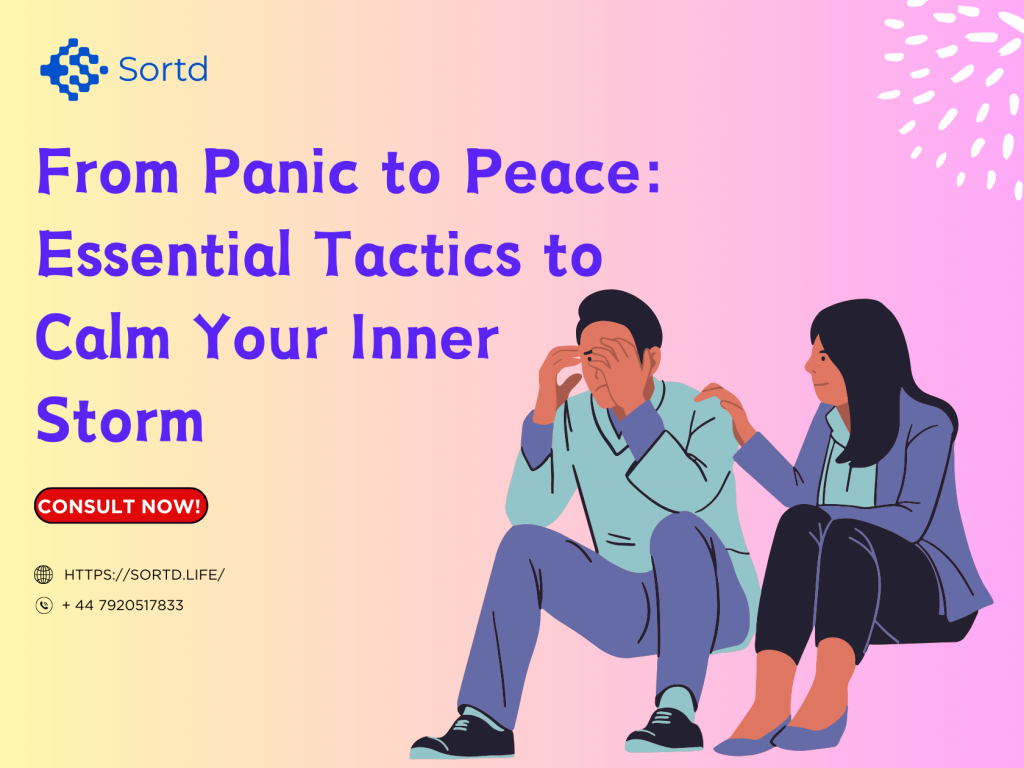
Experiencing a panic attack can be an overwhelming and distressing ordeal, but knowing effective strategies to stop it in its tracks can empower individuals to regain control and find relief. In this blog post, we’ll explore practical and proven methods to halt a panic attack, helping you navigate through these challenging moments with confidence.
1. Deep Breathing Techniques:
One of the quickest ways to interrupt a panic attack is through deep breathing. Focus on taking slow, deep breaths, inhaling through your nose, and exhaling through your mouth. This helps regulate your body’s stress response and promotes relaxation.
2. Grounding Exercises:
Grounding techniques anchor you in the present moment, diverting your attention from anxious thoughts. Try naming five things you can see, four things you can touch, three things you can hear, two things you can smell, and one thing you can taste.
3. Mindfulness Meditation:
Engage in mindfulness meditation to redirect your focus away from panic-inducing thoughts. Practicing mindfulness helps you observe your thoughts without judgment and promotes a sense of calm.
4. Focus on a Calming Object:
Carry a small, comforting object with you. When a panic attack arises, focus your attention on this object. Describe its texture, color, and shape in detail to distract your mind from anxious thoughts.
5. Challenge Negative Thoughts:
Identify and challenge negative thoughts contributing to the panic attack. Ask yourself if these thoughts are based on facts or if they are exaggerated. Rationalizing can help diminish the intensity of the panic.
6. Progressive Muscle Relaxation:
Progressive muscle relaxation involves tensing and then slowly releasing different muscle groups. This technique promotes physical relaxation, which can counteract the tense feeling associated with panic attacks.
7. Create a Safe Space:
Designate a physical or mental safe space. Visualize this space when a panic attack occurs, picturing a calm and secure environment. This visualization can provide a sense of comfort and security.
8. Reach Out for Support:
Don’t hesitate to reach out to a trusted friend, family member, or mental health professional. Sharing your feelings can provide emotional support and reassurance during a panic attack.
9. Establish a Regular Self-Care Routine:
Prioritize self-care in your daily life. Establishing a routine that includes proper sleep, regular exercise, and healthy nutrition can contribute to overall mental well-being, reducing the likelihood of panic attacks.
10. Professional Guidance:
If panic attacks persist or significantly impact your life, seek professional guidance. A mental health professional can help identify triggers, provide coping strategies, and explore therapeutic interventions.
Conclusion:
While panic attacks can be overwhelming, incorporating these strategies into your coping toolkit can make a significant difference. Remember that everyone’s experience is unique, so experimenting with different techniques to find what works best for you is essential. By proactively addressing panic attacks, individuals can regain a sense of control and resilience in the face of anxiety. Check Panic Attacks and Their Symptoms
